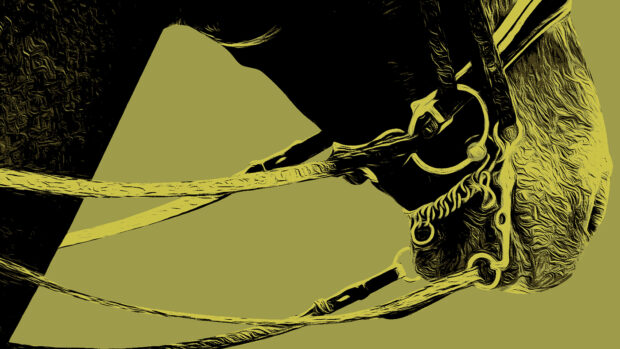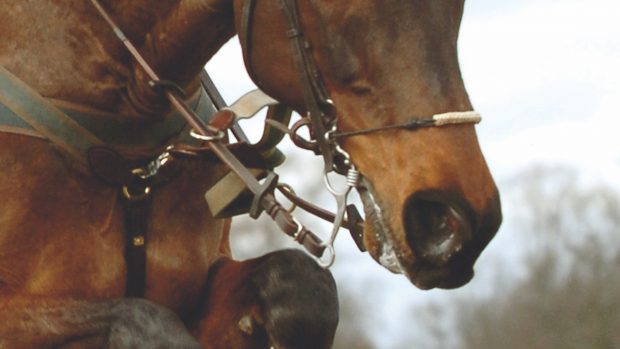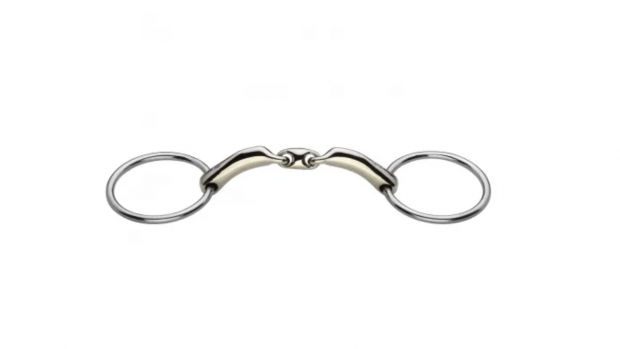The use of the Wilkie snaffle and beval bits in children’s mini (lead-rein and first ridden) classes has once again sparked debate in the showing world.
In the first ridden class at this year’s Horse of the Year Show (5-9 October), all bar two ponies were wearing these types of snaffles, as were many lead-rein contenders.
The use of the Wilkie and beval bit prompted much ringside debate.
“Even when standing still, the ponies were overbending, while some children never released the reins at rest,” said one former breeder.
“I fail to see why a true child’s pony — especially a lead rein — should have to be ridden in something which is technically a gag.”
The Wilkie bit and the beval snaffle feature fixed holes to which to attach the cheek pieces and reins, thus applying greater pressure on the poll than an eggbutt snaffle.
Research conducted by bit specialist Neue Schule confirmed this action on the poll when the reins and cheek pieces are fastened to the fixed holes on the beval bit.
Extensive tests were carried out by the Neue Schule team using two sensors – one applied to the cheek piece, the other to the rein.
The recorded tension was transmitted to a central computer and a rating was calculated to show how much poll pressure each type of bit created.
The beval bit was given a plus one rating for poll pressure, whereas an eggbut snaffle was given a zero rating and the hanging cheek snaffle a minus one, for its poll pressure relieving action.
Related articles:
- Choosing the right bit: would a hanging cheek snaffle suit my horse?
- Bitting debate resolved ‘once and for all’
- Overweight riders asked to dismount at show
British Show Pony Society chairman, Pat Pattinson, referred to the society’s rule book regarding bitting.
“It states that lead-rein and first ridden ponies must be shown in any suitable snaffle bridle,” she said.
“Judges will take into account the severity of the bit, their opinions on suitable bridles may vary and their decision is final.”




